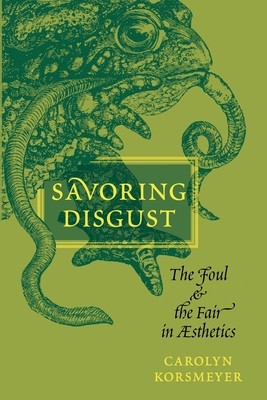
- We will send in 10–14 business days.
- Author: Carolyn Korsmeyer
- Publisher: Oxford University Press, USA
- ISBN-10: 0199756937
- ISBN-13: 9780199756933
- Format: 15.2 x 22.9 x 1.2 cm, minkšti viršeliai
- Language: English
- SAVE -10% with code: EXTRA
Reviews
Description
Disgust is among the strongest of aversions, characterized by involuntary physical recoil and even nausea. Yet paradoxically, disgusting objects can sometimes exert a grisly allure, and this emotion can constitute a positive, appreciative aesthetic response when exploited by works of art -- a phenomenon labelled here "aesthetic disgust." While the reactive, visceral quality of disgust contributes to its misleading reputation as a relatively "primitive" response mechanism, it is this feature that also gives it a particular aesthetic power when manifest in art.
Most treatments of disgust mistakenly interpret it as only an extreme response, thereby neglecting the many subtle ways that it operates aesthetically. This study calls attention to the diversity and depth of its uses, analyzing the emotion in detail and considering the enormous variety of aesthetic forms it can assume in works of art and --unexpectedly-- even in foods.
EXTRA 10 % discount with code: EXTRA
The promotion ends in 22d.16:32:41
The discount code is valid when purchasing from 10 €. Discounts do not stack.
- Author: Carolyn Korsmeyer
- Publisher: Oxford University Press, USA
- ISBN-10: 0199756937
- ISBN-13: 9780199756933
- Format: 15.2 x 22.9 x 1.2 cm, minkšti viršeliai
- Language: English English
Disgust is among the strongest of aversions, characterized by involuntary physical recoil and even nausea. Yet paradoxically, disgusting objects can sometimes exert a grisly allure, and this emotion can constitute a positive, appreciative aesthetic response when exploited by works of art -- a phenomenon labelled here "aesthetic disgust." While the reactive, visceral quality of disgust contributes to its misleading reputation as a relatively "primitive" response mechanism, it is this feature that also gives it a particular aesthetic power when manifest in art.
Most treatments of disgust mistakenly interpret it as only an extreme response, thereby neglecting the many subtle ways that it operates aesthetically. This study calls attention to the diversity and depth of its uses, analyzing the emotion in detail and considering the enormous variety of aesthetic forms it can assume in works of art and --unexpectedly-- even in foods.


Reviews